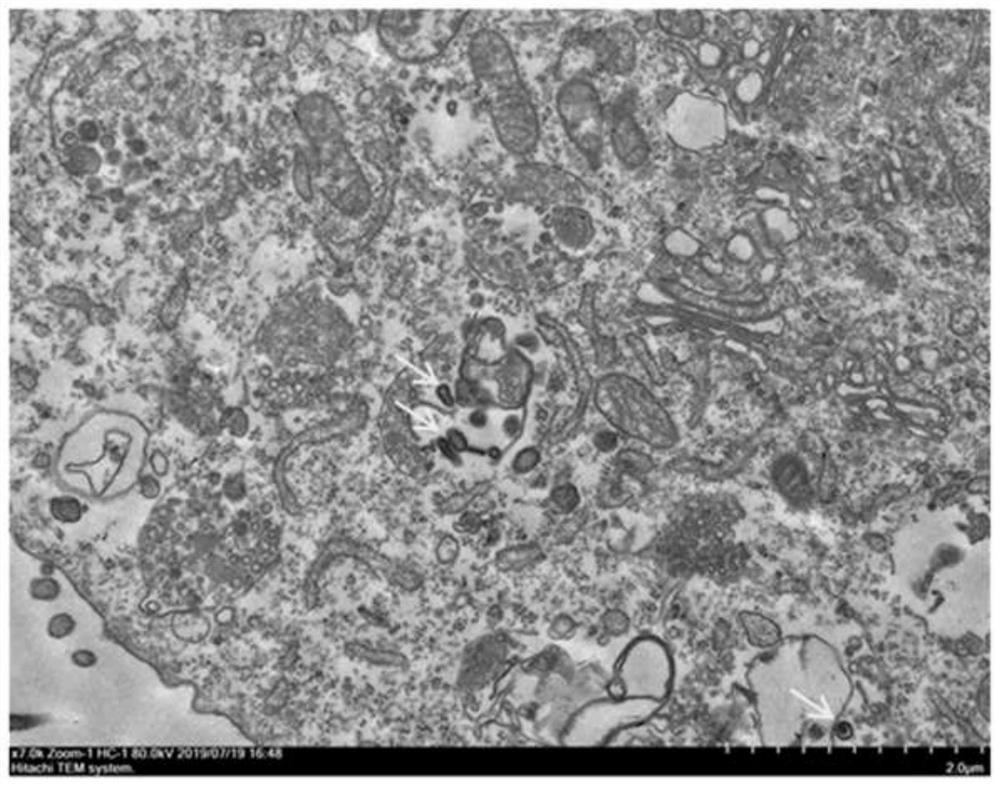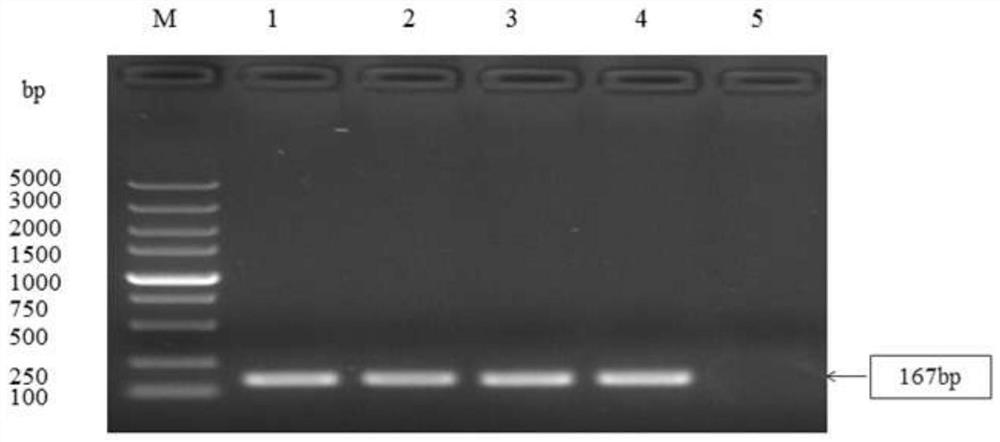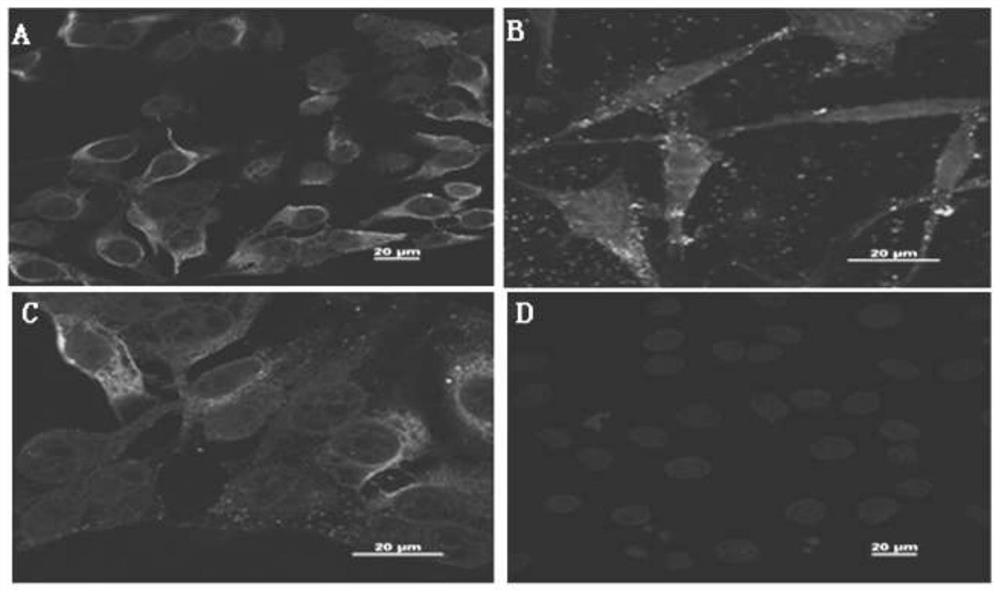Separation and culture method for Lawsonia intracellularis
A culture method and technology of Lawsonia, applied in the field of isolation and culture of Lawsonia intracellulare, to achieve the effect of increasing the success rate, avoiding pollution and increasing the quantity
- Summary
- Abstract
- Description
- Claims
- Application Information
AI Technical Summary
Problems solved by technology
Method used
Image
Examples
Embodiment 1
[0060] The preparation of embodiment 1 Lawsonia intracellulare isolate
[0061] Take out the suspected porcine ileum sample with typical symptoms of PPE from the -80°C refrigerator, quickly melt it and wash it three times with PBS, cut the intestinal tube longitudinally, scrape the intestinal mucus into a 50mL centrifuge tube with a sterile glass slide, and add pancreatic Enzyme, digest at 37°C for 30 minutes, add 30 mL of SPG solution containing 10% FBS to the digested intestinal mucus, place the diluted intestinal mucus in a tissue homogenization tube for homogenization, and filter the homogenate with a 200-mesh cell sieve , the filtrate was collected in a 50mL centrifuge tube, and then passed through 1.2, 0.8 and 0.65μm filter membranes successively, and finally DMSO was added to the filtrate with a final concentration of 10% to obtain Lawsonia intracellulare isolates, and each tube of 1mL was divided into 1.5mL Store in EP tubes at -80°C.
Embodiment 2
[0062] Example 2: Isolation and cultivation of Lawsonia intracellulare
[0063] 1) Recovery and subculture of McCoy cells
[0064] The McCoy cells were taken out from the liquid nitrogen, and quickly put into a 37°C water bath to melt, and the melted cells (cell density about 5×10 6 per mL) into 8 mL of HDMEM culture medium containing 10% FBS, 37°C, 5% CO 2 Cultivate under conditions, after the cells grow to a single layer, wash with sterile PBS 3 times, digest with 0.25% trypsin, stop the digestion when a small amount of cells fall off, discard the digestion solution, add DMEM cell culture medium containing 10% FBS, Repeated blowing several times to disperse into a single cell, draw an appropriate amount of cell fluid to another cell bottle for subculture, and use it after the cells adapt to the culture environment.
[0065] 2) Bacterial inoculation and culture
[0066] Will 1×10 5 When each / mL McCoy cells were cultured to a confluence of about 30%, the culture solution w...
Embodiment 3
[0069] Example 3: Identification of Lawsonia intracellulare
[0070] 3.1 Transmission electron microscope observation of the morphology of Lawsonia intracellulare strains in McCoy cells
[0071] Prepare ultrathin slices of the samples obtained in Example 2 after inoculating McCoy cells with Lawsonia intracellulare for 3 hours. After staining with phosphotungstic acid, observe under a transmission electron microscope whether the McCoy cytoplasm contains bacteria consistent with the morphological characteristics of LI; The results are shown in Figure 1. Rod-shaped and comma-shaped bacteria can be observed in the cytoplasm of McCoy cells, which is consistent with the morphological characteristics of Lawsonia intracellulare.
[0072] 3.2 Ordinary PCR identification
[0073] In this experiment, the LI aspA gene (F: GCTGTGGATTGGGAGAAATC; R: CAAGTTGACCAGCCTCTGC) was synthesized according to literature reports, and the amplified sequence was 167bp. Use the bacterial genomic DNA extr...
PUM
 Login to View More
Login to View More Abstract
Description
Claims
Application Information
 Login to View More
Login to View More - R&D
- Intellectual Property
- Life Sciences
- Materials
- Tech Scout
- Unparalleled Data Quality
- Higher Quality Content
- 60% Fewer Hallucinations
Browse by: Latest US Patents, China's latest patents, Technical Efficacy Thesaurus, Application Domain, Technology Topic, Popular Technical Reports.
© 2025 PatSnap. All rights reserved.Legal|Privacy policy|Modern Slavery Act Transparency Statement|Sitemap|About US| Contact US: help@patsnap.com



